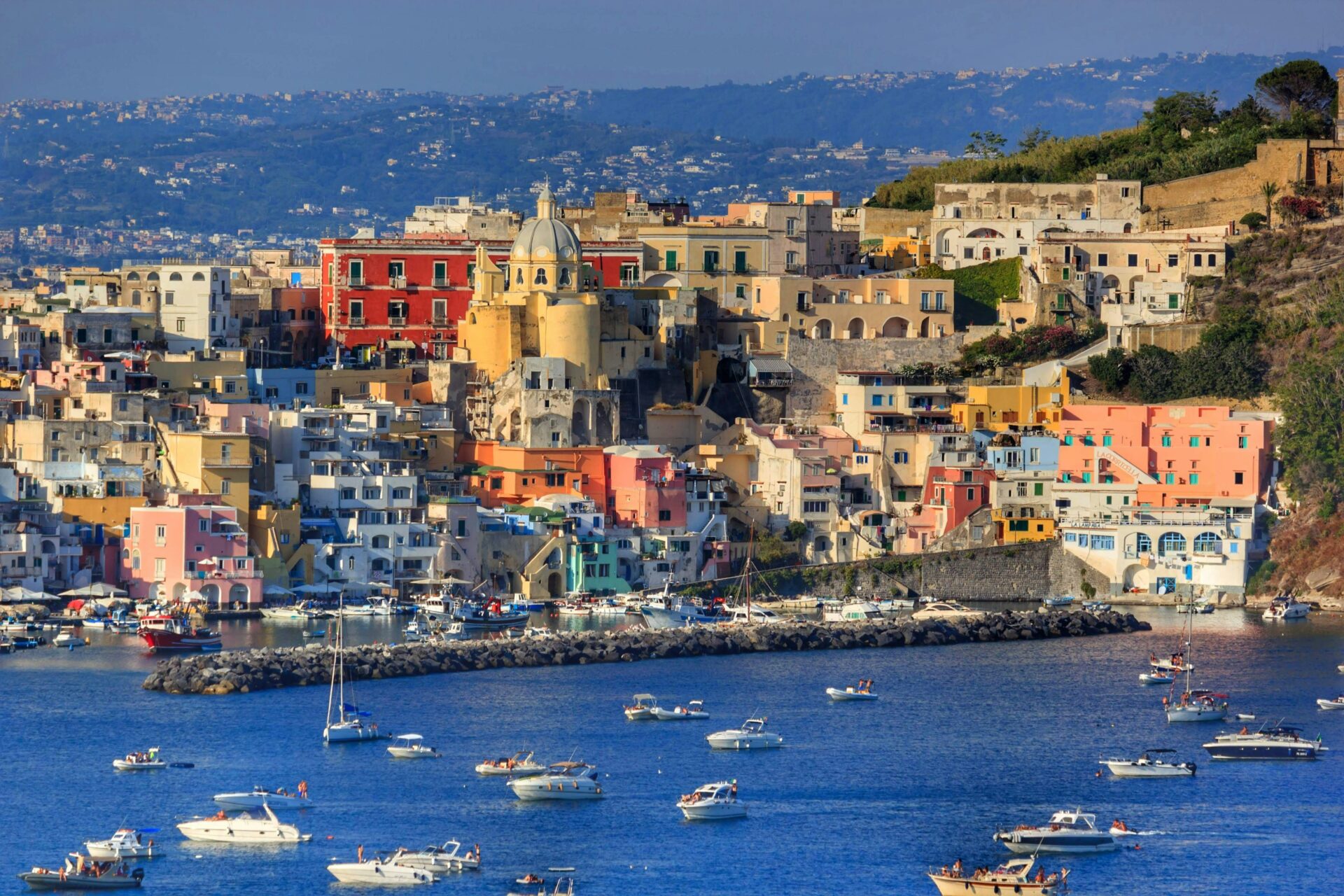When I first set foot on Rainbow Harbor, the island’s rugged beauty just hit me. It’s the same kind of scenery that drew in the filmmakers of the beloved movie “Il Postino.”
This charming fisherman’s island feels a lot like the real filming spots—Procida and Salina, just off Italy’s coast.
The simple way of life here, paired with those wild volcanic landscapes, creates the perfect setting for stories about poetry, love, and all those deep connections.
Rainbow Harbor didn’t actually appear in “Il Postino,” but it absolutely gives off the same fishing village and Mediterranean charm. Wandering through its narrow streets, I can’t help but think of Mario delivering letters to Pablo Neruda.
Colorful houses face the sea. Fishing boats look weathered by decades of use. Locals mend nets on the docks, and the whole scene feels frozen in time—just like the film.
When I visit places like Rainbow Harbor, I start to appreciate the universal themes in “Il Postino” even more. The island’s slow pace nudges you into long conversations and reminds you to savor small joys.
Like Procida and Salina, Rainbow Harbor feels far from the chaos of modern life. It’s a rare place where you can reconnect with nature and community in a pretty meaningful way.

Discovering Rainbow Harbor: The Real-Life Inspiration Behind ‘Il Postino’
Procida, the colorful fishing village in Italy’s Bay of Naples, set the stage for ‘Il Postino.’ This picturesque island with pastel buildings and traditional fishing culture became the perfect backdrop for the movie’s heartfelt story.
The Setting for an Iconic Film
I ended up at Rainbow Harbor (which locals call Procida’s main port) after falling in love with ‘Il Postino.’ The houses along the waterfront glow in every color, making the nickname “Rainbow Harbor” stick with travelers.
As I walked those narrow streets, I could almost hear Pablo Neruda and his postman friend talking about metaphors and poetry.
The filmmakers picked this spot for its raw authenticity. Unlike the glitzier coastal towns, Procida kept its working-class fishing village feel when the film crew arrived in the ’90s.
Small fishing boats bob in the clear water, bumping up against colorful buildings. The scenery practically writes its own poetry.
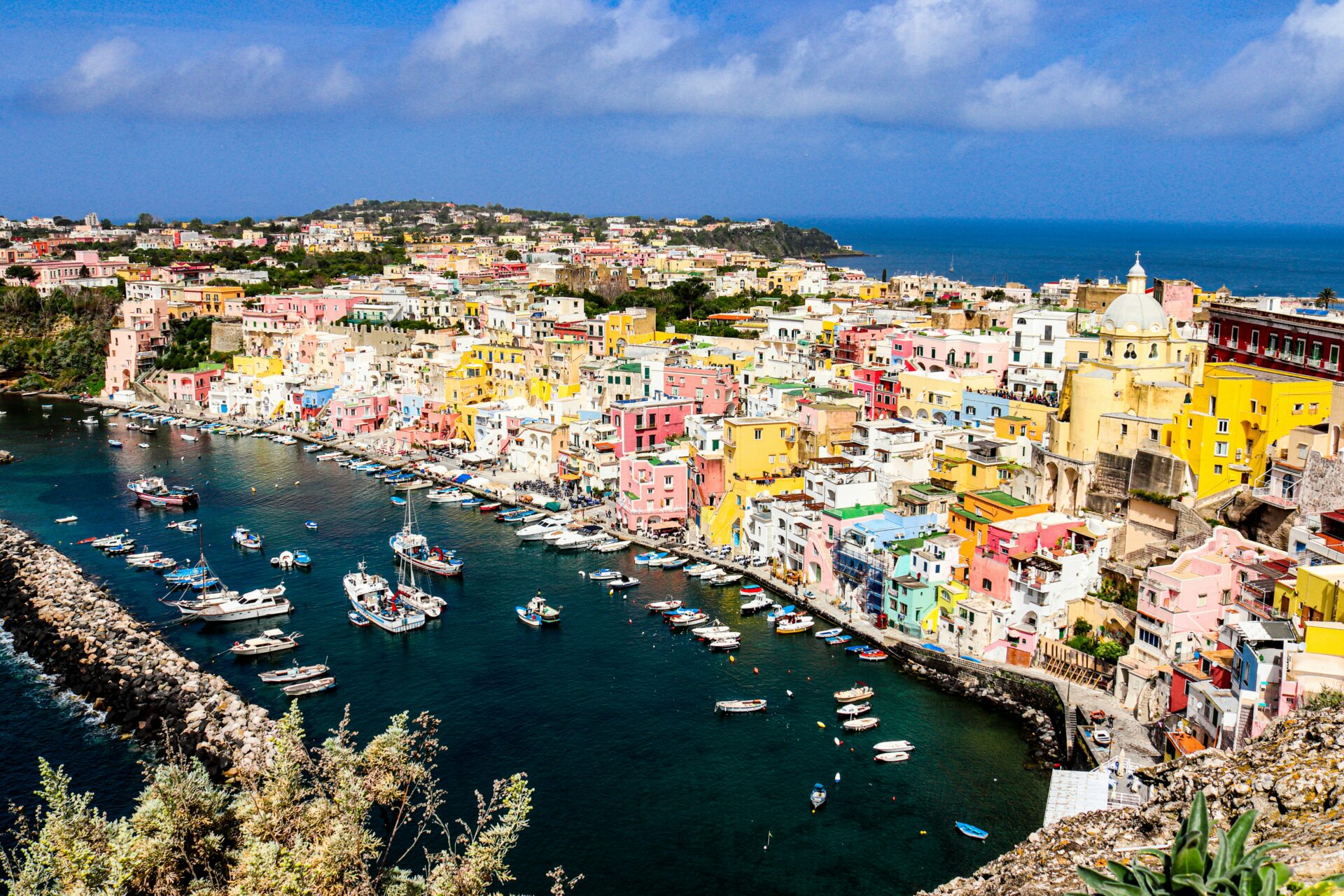
From Procida to International Recognition
Before ‘Il Postino,’ only Italians really knew about Procida as a quiet escape. After the film blew up, suddenly the whole world wanted to see this little island.
Tourism has picked up, but it’s still nowhere near as crowded as Capri.
The movie racked up five Academy Award nominations, including Best Picture. That kind of attention doesn’t come often to places like this.
Fishermen still tell stories about the filming. They’ll point out where big scenes happened, and some businesses even display old movie photos and memorabilia.
Even with all that buzz, Procida has kept its authentic charm. That’s not easy for a filming location.

Why Rainbow Harbor Captivates Audiences
Honestly, I think this harbor wins people over because it feels real. There are no fake sets—just a genuine community living its life.
The bright colors reflect the island’s spirit: warm, lively, and a little bit bold. Those visuals stick with you.
The harbor itself almost becomes a character in the story. Tight alleyways and small piazzas make every encounter feel personal.
For visitors like me, retracing those paths offers a real connection to the film’s message about poetry, love, and friendship. There’s something timeless here that keeps drawing people back—filmmakers and travelers alike.

A Fisherman’s Island Steeped in History
The island behind ‘Il Postino’ carries centuries of maritime heritage. Ancient civilizations, old fishing practices, and colorful customs all blend into a culture that still feels alive.
From Roman Times to Modern Day
I wandered along the harbor, following footsteps that go back thousands of years. Roman ships once anchored here, setting up trading posts that connected the island to the empire.
You can still spot ancient stone buildings scattered across the island.
After Rome fell, the island changed hands a lot. Greek settlers brought their fishing know-how and merged it with local traditions.
Later, the island joined Italy’s growing maritime network.
In the Middle Ages, the island became a strategic outpost. Locals built watchtowers to spot invaders, and those towers still stand as reminders of a turbulent past.
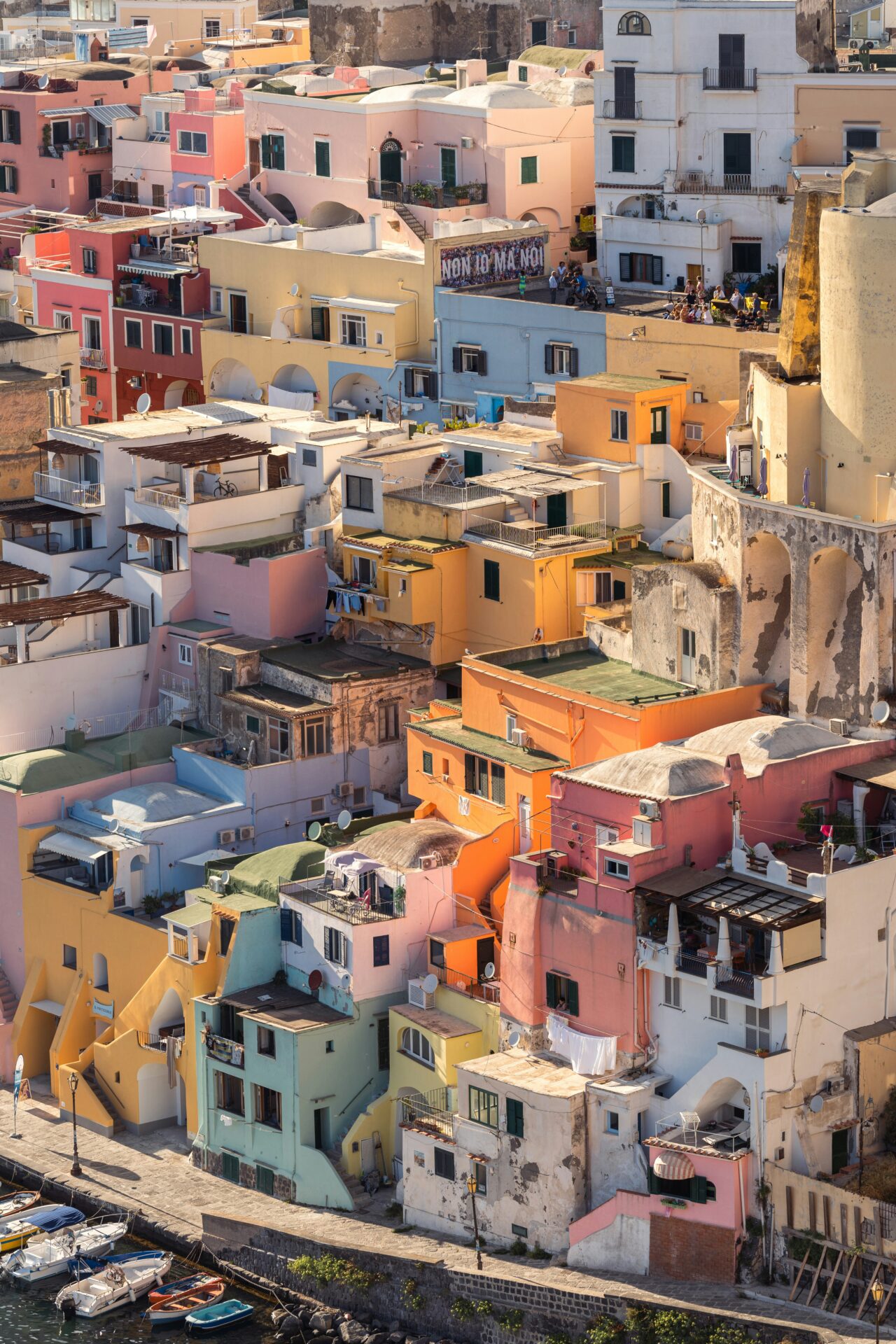
Traditional Fishing Communities
The fishing community has always been the heart of the island. Families pass down their fishing knowledge, sticking with techniques that haven’t changed much in centuries.
Early mornings are something special. I watch fishermen get their nets ready, just like their grandparents did.
Painted wooden boats bob in the harbor, each one showing off family colors and patterns.
Kids pick up the trade early, helping to mend nets and sort the day’s catch. That link between young and old keeps these ancient skills alive.
Fishing here stays sustainable by tradition. Islanders use methods that avoid overfishing and protect the sea—pretty forward-thinking, honestly.
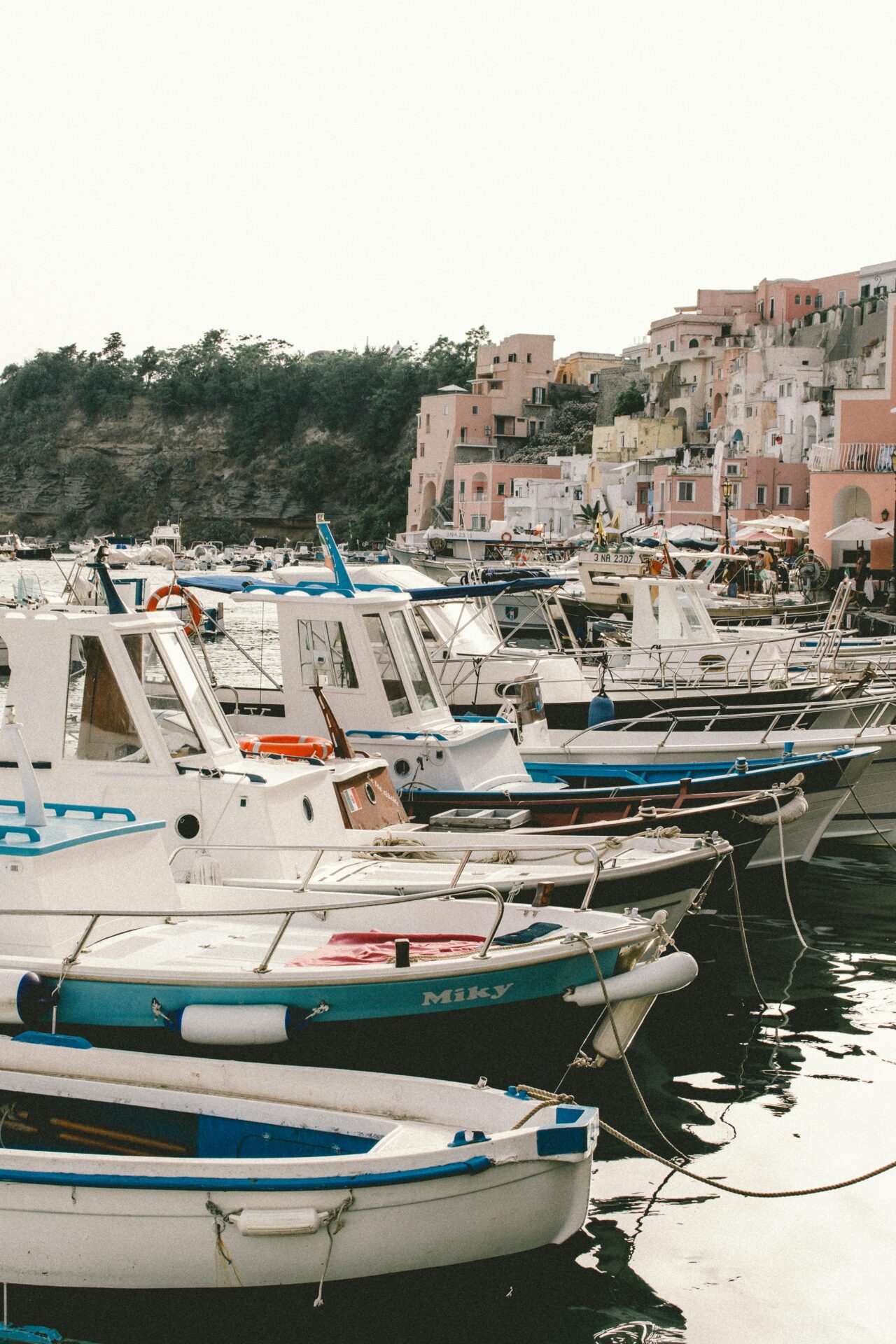
Island Life and Local Customs
Life beats to the rhythm of the sea. The morning fish market isn’t just about buying seafood; it’s where everyone swaps news and keeps the community tight.
Religious festivals light up the harbor with processions. Boats get decorated with flowers and ribbons, and families sing old songs that have echoed here forever.
The food tells its own story. I’ve tasted dishes that mix Roman, Greek, and Italian flavors—simple ingredients, but centuries of know-how.
While men fished, women ran the households and managed the money. Their influence shaped island life in big ways.
Many homes sport blue doorways, a tradition believed to bring luck to those who make their living from the sea.
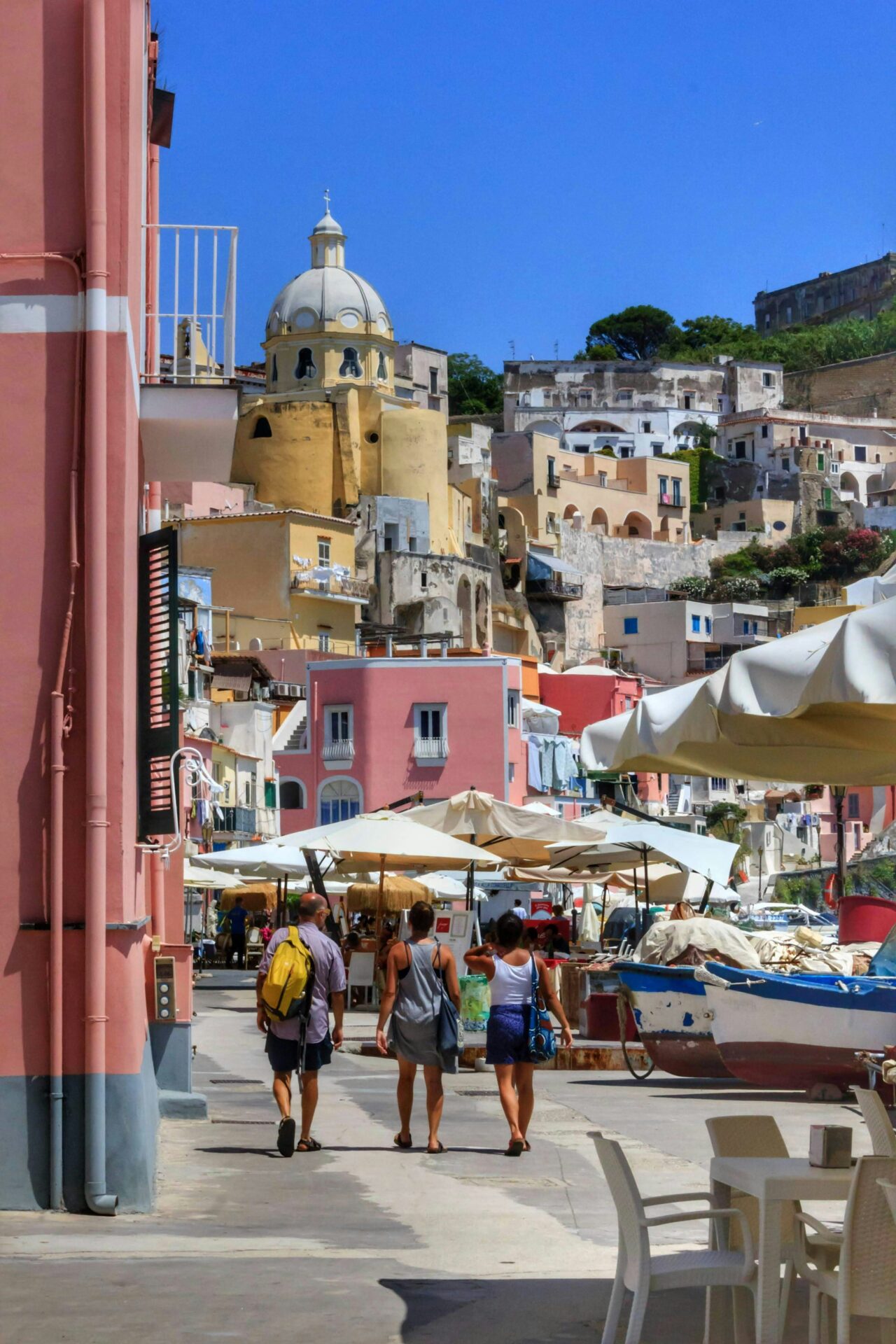
Rainbow Harbor’s Cinematic Connections
Rainbow Harbor has popped up in quite a few films and TV shows. Its good looks and working fishing village vibe keep attracting directors who want a slice of Mediterranean life.
Filming Locations of ‘Il Postino’
I found out that Rainbow Harbor’s winding paths and rustic homes showed up all over “Il Postino,” the 1994 film about a shy postman and the exiled poet Pablo Neruda.
The harbor’s beauty gave the movie its poetic backdrop.
They shot many scenes along the eastern bay, where fishermen’s cottages hug the shore.
The café where the postman learns about metaphors? That was the restored Fisherman’s Hall, and it still stands today.
Beach scenes with the postman and Neruda happened at Coral Cove, just north of the harbor. You can walk those same paths—nothing much has changed since filming.

Other Notable Films and Series
Besides “Il Postino,” Rainbow Harbor has made cameos in other productions. HBO’s “Mediterranean Summers” used the western dock for several seaside scenes.
I didn’t expect to see the harbor in “Lawrence of Arabia,” but it shows up briefly during a Mediterranean sequence. The northern district’s Greek-inspired buildings played the part of a Grecian town.
Doctor Who fans might spot the lighthouse in the “Siren Shores” episode from 2018. The blue-trimmed buildings on the main street have appeared in travel shows and commercials, too.
Local guides now run a “Cinema Walk,” taking visitors to all the big filming spots and sharing behind-the-scenes stories from locals who worked as extras.

Traveling to Rainbow Harbor: Where To Stay and What To Do
Rainbow Harbor has great places to stay, delicious food, and plenty of activities that really capture this fisherman’s island spirit.
Best Places to Stay: Apartments, Pensions, and More
I think the best way to experience Rainbow Harbor is to stay in a locally-owned pension or a furnished apartment. The Marina View Pension gives you simple rooms with harbor views and breakfast, all for about $85 a night.
If you want something homier, try the Postino Apartments near the main square. My apartment there had a tiny kitchen, a cozy fireplace for chilly nights, and a balcony overflowing with bougainvillea.
The owners even left fresh fruit on the table each day.
On a budget? Fisherman’s Rest is a family-run guesthouse with basic, clean rooms starting at $50. If you want a splurge, The Harbor House offers boutique hotel rooms with all the fancy touches.
Top accommodations by price range:
- Budget: Fisherman’s Rest ($50-70)
- Mid-range: Marina View Pension ($85-110)
- Premium: Postino Apartments ($120-150)
- Luxury: The Harbor House ($180+)

Dining by the Water: Local Cuisine and Experiences
Rainbow Harbor’s waterfront restaurants serve up the freshest seafood I’ve ever had. Maria’s Kitchen became my favorite—I couldn’t get enough of their lemon pasta with local clams, especially while watching the boats come in.
For breakfast, I always stopped at Harbor Bakery for espresso and sfogliatelle. Giovanni, the owner, loves to share island stories with anyone who walks in.
The weekly Fisherman’s Market (Thursdays and Sundays, 7am-noon) is a must. I bought seafood straight from the fishermen.
Some restaurants offer cooking classes, too. I learned to make cioppino fish stew at Cucina del Porto.
My top dining moments:
- Dinner at La Terrazza during sunset
- Wine tasting at Vino di Mare
- Fresh fish at Ristorante del Pescatore

Exploring the Island: Activities and Tours
Just walking Rainbow Harbor’s colorful streets is an experience. I spent mornings wandering the alleys where ‘Il Postino’ was filmed, like the famous yellow post office.
The ‘Il Postino Film Tour’ ($25) takes you to all the key movie spots, with plenty of fun behind-the-scenes stories. If you’re up for something active, try kayaking around the harbor ($30 for 2 hours) or hiking the eastern cliffs for killer views.
Boat tours ($45) let you see hidden coves and secret beaches. I joined a half-day fishing trip with Paolo, a local fisherman, who showed me traditional fishing tricks.
Cultural experiences you shouldn’t miss:
- Boat building demos (Tuesdays, free)
- Evening music in the piazza (weekends)
- Pottery workshops at Artisan Studio ($20)
- The Fisherman’s Festival (last weekend of June)
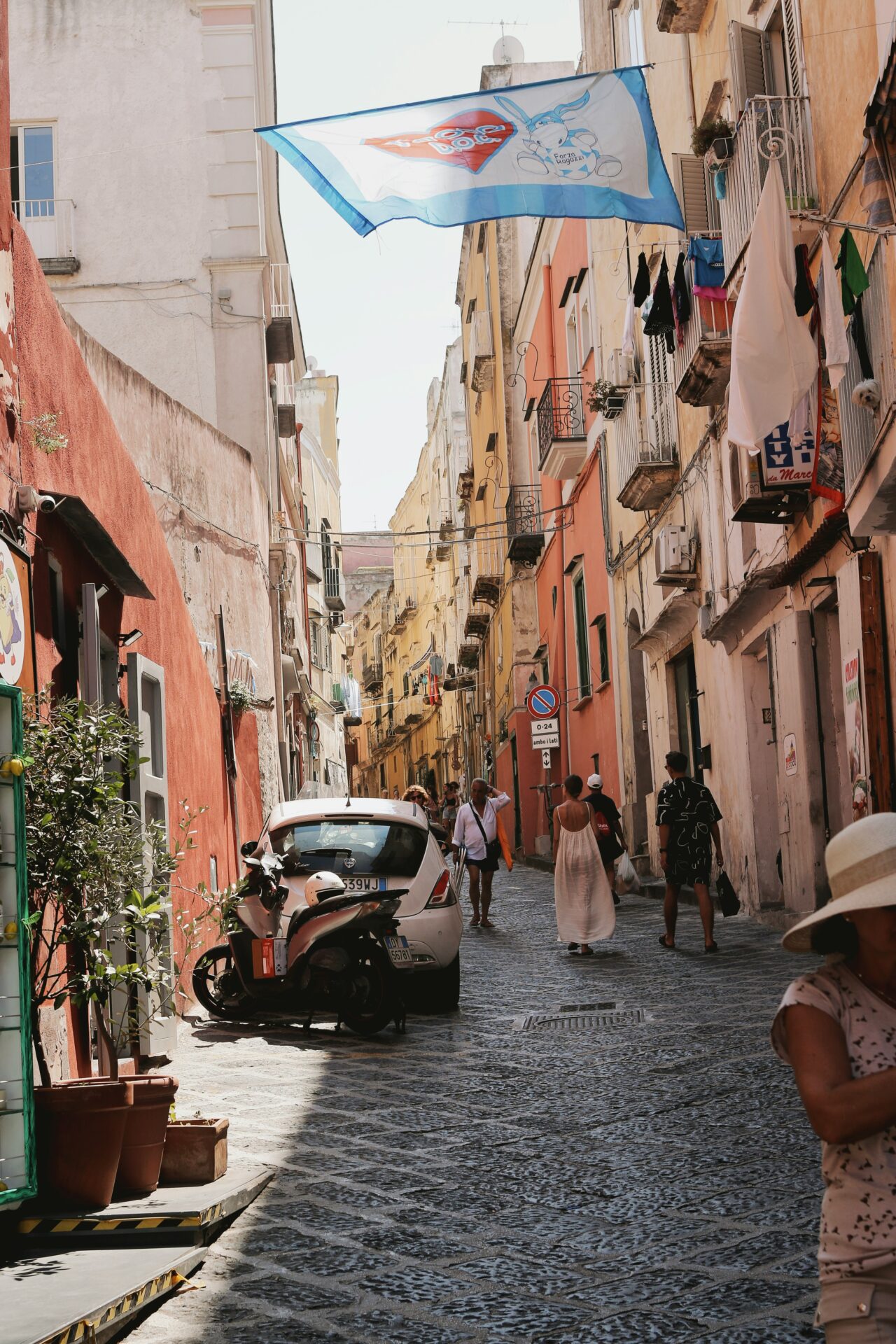
Art, Literature, and Cultural Influences on Rainbow Harbor
Rainbow Harbor’s creative spirit comes from centuries of artistic exchange and literary tradition. Its cultural heritage stretches beyond just film—this place has seen poets, painters, and storytellers from all over the Mediterranean.
Storytelling Traditions and Poetic Legacy
As I walk the cobblestone paths, I keep running into reminders of the poets who found inspiration here. Fishermen still recite old verses while they mend their nets at sunset.
These oral traditions often revolve around the sea god Argo, whose image appears in harbor mosaics.
The island gained some literary fame when poet Marco Bianchi spent three summers here in the 1950s. His book “Salt and Stars” captures the island’s wild beauty and stubborn spirit.
I’ve attended the annual Poetry Festival in the main square, where locals perform dramatic readings. The tradition goes way back—even to Catherine the Great’s era, when Russian traders brought Slavic verse to these shores.
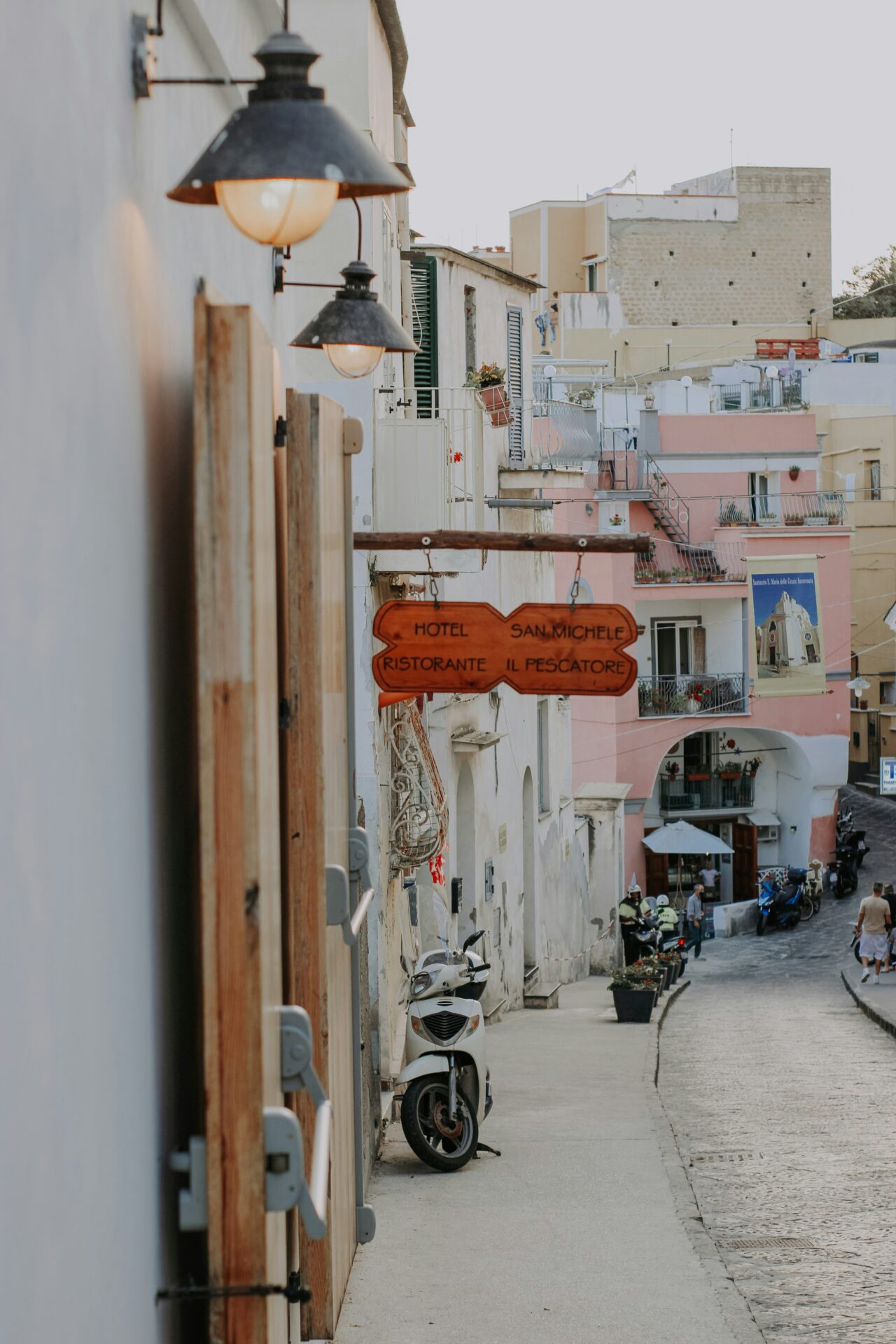
Influences from Surrounding Cultures
Rainbow Harbor sits at a crossroads, so its cultural blend shows up in everything from food to architecture. Greek, Spanish, and North African touches appear in the building facades and art throughout the harbor.
The Heritage Museum displays a cool collection of maritime artifacts, including a replica of a trading vessel from Elizabeth I’s time—back when English merchants set up shop here.
If you visit in May, check out the Fishermen’s Festival. Locals perform traditional dances that reflect centuries of Mediterranean mixing. The festival also features art installations that take a hard look at history, critiquing imperialism while celebrating resilience.
The local theater puts on “The Queen’s Harbor,” a play inspired by Helen Mirren’s 2013 visit, when she researched a historical drama filmed partly on the island.

